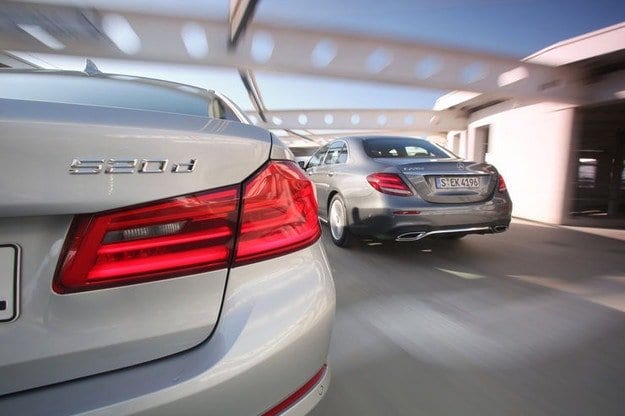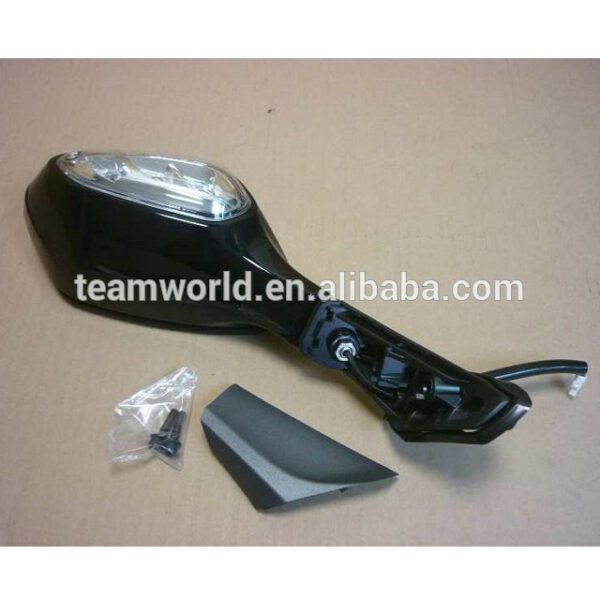
Test drive BMW 520d vs Mercedes E 220 d: an eternal duel
Content

The clash of two rivals raises questions more interesting than the question of the winner.
Business sedans with a four-cylinder diesel - at first glance, it sounds rather uninteresting. Riding with a BMW 520d and its toughest rival Mercedes The E 220 d, however, will cast doubt on the boundaries between classes.
In fact, this story revolves around the banal question of which is better than two business sedans. As has often happened over the past 40 years, when the new E-Class again challenges the "five" or vice versa - as it is today. With those thoughts in mind, you get into the 520d, the electric assistants close the door, put the phone in the place where it starts to charge, and then with the idea straighten the upper segment of the back of the extremely soft leather, comfortable seat. Then other questions suddenly come to mind: So is this just the middle of three classic BMW sedan series? And how much more can a "week" surpass it?
BMW 520d with premium luxury
But progress has touched not only electronics - for the first time in its history, the "five" generously offers a truly spacious interior. Although the model has grown only three centimeters in length, rear legroom is more than six centimeters more than before, and thus surpasses even the traditionally spacious E-Class. In addition, your guests travel in an especially comfortable rear seat that can be folded into three parts in a 40:20:40 ratio. The advantage over a split backrest is that if you fold the narrow middle section, the two passengers in the outer seats will not sit so much. close to each other.
Although BMW promises to reduce weight by 100kg, our test car weighs 25kg more than its automatic predecessor tested in early 2016. As is often the case, ambitious diet plans are outlined by the added new technique. However, the “five” is lighter than the E-Class by more than a hundred kilograms, and this turns out to be the most significant difference in terms of bodywork - after all, in terms of external dimensions, space and trunk volume, these two cars are approximately on the same level. , as well as the impression of high-quality and flexible layout.
Since the body cannot be used to highlight the differences between the two cars, we will have to compare infotainment systems more closely. Indeed, the E-Class now also has the most important online features, supports mobile apps via Apple Carplay and Android Auto, and presents it all on two impressive 12,3-inch widescreen displays (surcharge). However, Mercedes models cannot match the wide range of supported internet features in the top five.
You drive, not surf
Displays, apps, internet? No, you didn't accidentally pick up a computer magazine. And without that, we end this topic and start the OM 654 unit, which with its 194 hp. and 400 Nm have nothing to do with the former lethargic diesel Benz. The reasons for the lack of a six-cylinder engine are purely acoustic in nature - with a strong gas supply, a two-liter engine sounds rude and corny. However, it accelerates the E-Class powerfully and revs intelligently as it tries to hit the limiter. Thanks to the diesel principle, the narrow speed range is compensated by the smooth and bumpless shifting of the nine-speed automatic transmission with a wide ratio range.
And not only that: in the sporty position, when stopping before a corner, the torque converter automatic shifts down a few gears and thereby applies the engine brake and ensures proper traction during the subsequent acceleration. The Mercedes representative not only accelerates one idea faster, but also manages the dynamics of road dynamics more skillfully – in contrast to the test of six-cylinder variants (see Ams, issue 3/2017), in which the E 350 d gave way to the 530d. However, the measured values are only one side of the coin: with optional all-wheel drive, the 520d feels amazingly agile. When driving at low speeds, the front and rear wheels deviate in opposite directions, which improves maneuverability. At higher speeds, the front and rear axles turn in the same direction, resulting in a stable trajectory. However, there is a very slight artificial note in the handling, and in direct comparison, the Mercedes model is perceived as more frank and inspiring. When driving at the traction limit, both test participants steer themselves equally smoothly and, with the help of precisely dosed ESP interventions, they manage to turn in the event of an overspeed by the driver.
Brand boundaries disappear
Presented a year ago, the E-Class has significantly improved its dynamics, but what does the “five” do? She brazenly catches up with her backlog in comfort. True, its four-cylinder diesel sounds a bit rougher when cold-started or boosted and consumes an average of 0,3L/100km more in the test, but again the differences between the two cars are exhausted. The ZF eight-speed automatic also does a great job, shifting gears smoothly, with only the tachometer keeping you informed of shift points. Speaking of softness, BMW's adaptive chassis responds with the feeling of tarmac damage and softens the harshness of even the roughest bumps without allowing excessive lean to the side. While it transmits jolts from the short crossbars to the passengers a little more clearly than the smoother Mercedes, the quiet five-wheeler instills confidence and a high-class feel in the same way.
Previously, engineers had to decide whether to make the car more sporty or more comfortable. Thanks to the many systems of adaptation, both types of behavior can be achieved today. Therefore, the E-Class can easily become a great BMW, and the “five” a worthy Mercedes, which inevitably leads to the question: if constant rivals, starting from opposite sides, are gradually approaching some kind of optimum, then are design and information only entertainment systems? will define the character of the brand?
However, BMW manages to keep a certain distance in setting prices - in the Luxury Line version, at almost the same base price, the “five” leaves the factory much better equipped (for example, LED headlights, online navigation and leather upholstery); Of the 52 individual results on the scoreboard, more than two points of difference can be found in this area alone.
Text: Dirk Gulde
Photo: Hans-Dieter Zeifert
Evaluation
1. BMW 520d - 480 points
The Five has worked hard on its previous weaknesses - now it offers more space, runs quieter and rides comfortably. Flexible behavior and an infotainment system have always been among its virtues.
2. Mercedes E 220d – 470 points
The e-Class combines familiar virtues such as driving comfort and safety with newly acquired dynamic qualities. Considering the high price, the standard equipment leaves a lot to be desired.
technical details
| 1.BMW 520d | 2. Mercedes E 220d | |
|---|---|---|
| Working volume | 1995 cc | 1950 cc |
| Power | 190 k.s. (140 kW) at 4000 rpm | 194 k.s. (143 kW) at 3800 rpm |
| Maximum torque | 400 Nm at 1750 rpm | 400 Nm at 1600 rpm |
| Acceleration 0-100 km / h | 7,9 with | 7,8 with |
| Braking distances at a speed of 100 km / h | 34,40 m | 35,9 m |
| full speed | 235 km / h | 240 km / h |
| Average consumption fuel in the test | 7,10 l / 100 km | 6,80 l / 100 km |
| Base Price | 51 750 EUR (in Germany) | 51 563 EUR (in Germany) |
